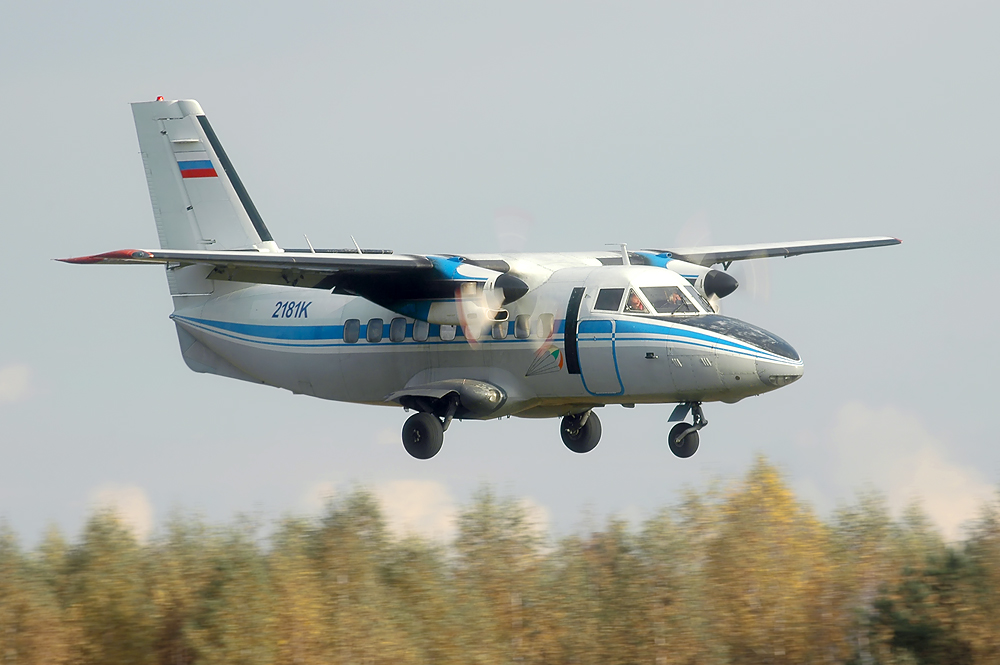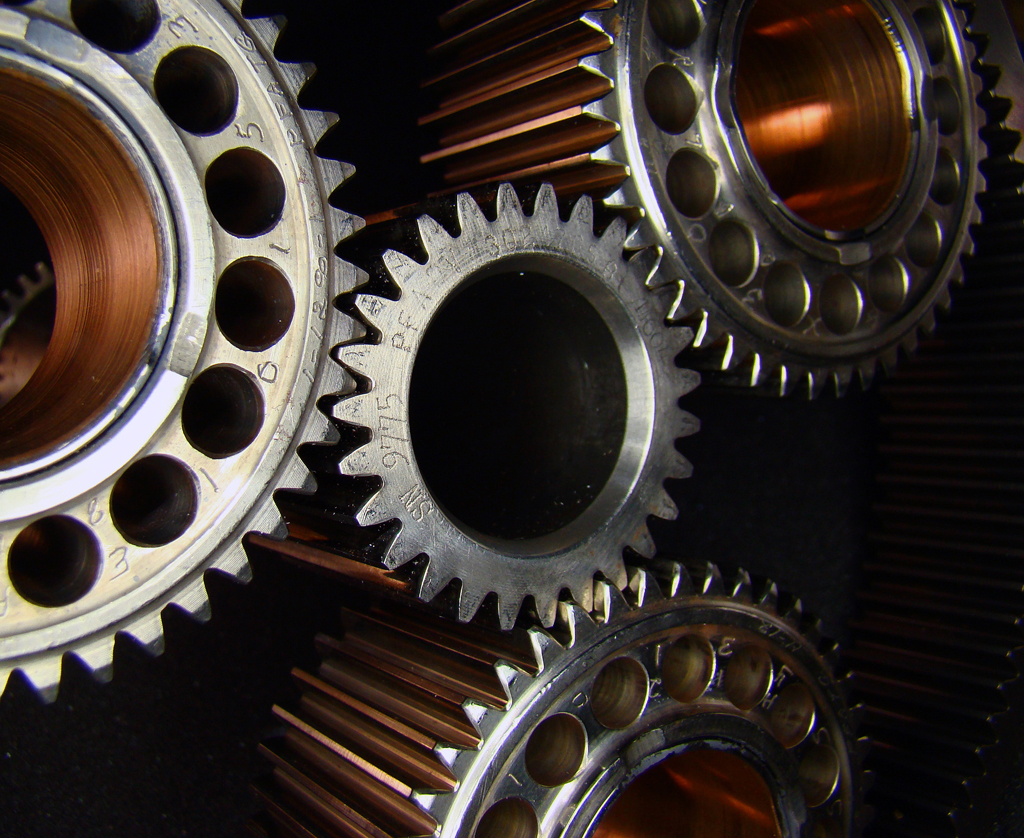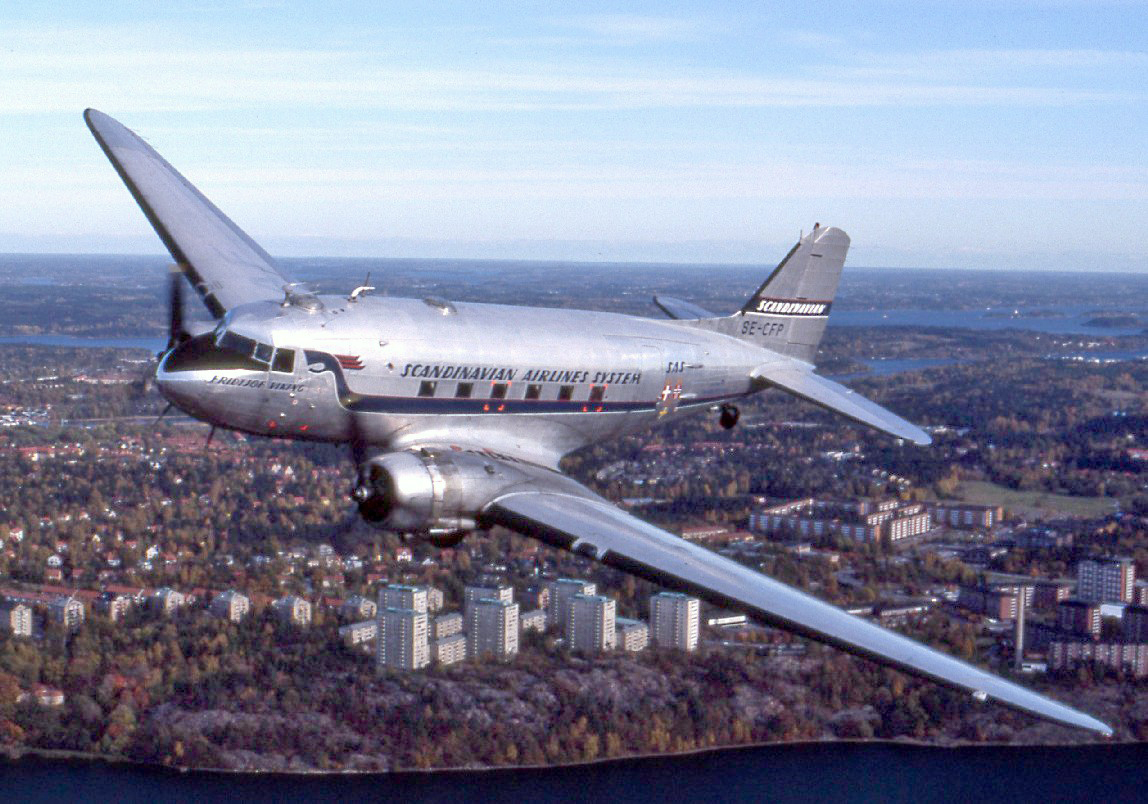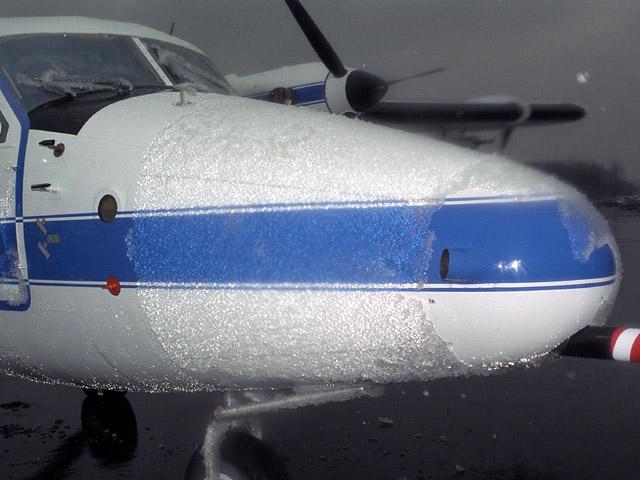|
L-410
The Let L-410 Turbolet is a twin-engine short-range transport aircraft, manufactured by the Czech Republic, Czech aircraft manufacturer Let Kunovice (named Aircraft Industries since 2005), often used as an airliner. The aircraft is capable of landing on short and unpaved runways and operating under extreme conditions from . By 2016, 1,200 L-410s had been built, and over 350 are in service in more than 50 countries. Development Development of the L-410 was started in the 1960s by the Czechoslovakia, Czechoslovak aircraft manufacturer Let Kunovice. The Soviet airline Aeroflot was looking for a turboprop-powered replacement for the Antonov An-2 aircraft, initiating the design development by Let. After preliminary studies of an aircraft called the L-400, a new version was introduced called the L-410 Turbolet. The first prototype, designated XL-410, flew on April 16, 1969. Because of delays in the development of a suitable Czech engine (Walter M601), the prototype and first produc ... [...More Info...] [...Related Items...] OR: [Wikipedia] [Google] [Baidu] |
Let Kunovice
Aircraft Industries, a.s.,Contacts " Let Kunovice. Retrieved on 19 May 2011. "Aircraft Industries, a.s. Na Z√°honech 1177 686 04 Kunovice Czech Republic" ‚Ä Address in Czech "Aircraft Industries, a.s. Na Z√°honech 1177 686 04 Kunovice ńĆesk√° republika" operating as Let, n.p., is a (before December 1992 ) civil manufacturer. Its most successful design has ... [...More Info...] [...Related Items...] OR: [Wikipedia] [Google] [Baidu] |
Walter M601
The Walter M601 is a turboprop aircraft engine produced by Walter Aircraft Engines of the Czech Republic. The company's first turboprop, the M601 is used in business, agricultural and military training aircraft. Development The turboprop was designed for use on the Let L-410 and the M601 first ran in 1967. It was not suitable for the prototype L-410 and the company developed an upgraded version, the M601A, with a slightly wider diameter. Variants ;M601A: :Initial production variant for early version of the Let L410. ;M601B: :Production variant for the Let L410UVP. ;M601D :Developed for the Let L410UVP. ;M601D-1: :Agricultural variant for high-cycle operation, used on the PZL Kruk and Ayres Thrush. ;M601D-2: :Special variant for paradrop aircraft, used on the Do 28 and some Finist conversions. ;M601D-11: :Agricultural and paradrop variant with a higher Time Between Overhaul of up to 1800 hours. ;M601D-11NZ: :Downrated variant for use in the FU-24 Fletcher. ;M601E: :Developed f ... [...More Info...] [...Related Items...] OR: [Wikipedia] [Google] [Baidu] |
Aircraft Industries L 410 NG
Aircraft Industries L 410 NG ("New Generation") is a twin-engine 19-seat aircraft manufactured by Czech company, Aircraft Industries (formerly Let Kunovice). The aircraft is an upgraded version of the Let L 410 UVP-E20. The first flight took place on 29 July 2015. Serial production of the L 410 NG began in March 2018. Development The development of the modernized L 410 was launched in 2010. The first prototype L 410 NG was first presented to the public on July 15, 2015 at Kunovice Airport in Slov√°cko. The first flight took place on July 29, 2015 at Kunovice Airport. The basic flight characteristics and performance of the airplane, as well as proper operation of the airplane control system, propulsion unit, fuel system, avionics and navigation systems have been verified. Design Compared to previous models, the L 410 NG has significant changes. It comes with new, more powerful GE H85-200 engines, combined with quieter AV-725 propellers; a new wing design featuring an integrate ... [...More Info...] [...Related Items...] OR: [Wikipedia] [Google] [Baidu] |
Turboprop
A turboprop is a turbine engine that drives an aircraft propeller. A turboprop consists of an intake, reduction gearbox, compressor, combustor, turbine, and a propelling nozzle. Air enters the intake and is compressed by the compressor. Fuel is then added to the compressed air in the combustor, where the fuel-air mixture then combusts. The hot combustion gases expand through the turbine stages, generating power at the point of exhaust. Some of the power generated by the turbine is used to drive the compressor and electric generator. The gases are then exhausted from the turbine. In contrast to a turbojet or turbofan, the engine's exhaust gases do not provide enough energy to create significant thrust, since almost all of the engine's power is used to drive the propeller. Technological aspects Exhaust thrust in a turboprop is sacrificed in favor of shaft power, which is obtained by extracting additional power (beyond that necessary to drive the compressor) from turbine ex ... [...More Info...] [...Related Items...] OR: [Wikipedia] [Google] [Baidu] |
Pratt & Whitney Canada PT6
The Pratt & Whitney Canada PT6 is a turboprop aircraft engine produced by Pratt & Whitney Canada. Its design was started in 1958, it first ran in February 1960, first flew on 30 May 1961, entered service in 1964 and has been continuously updated since. It consists of two basic sections: a gas generator with accessory gearbox and a free power turbine with reduction gearbox, and is often seemingly mounted backwards in an aircraft in so far as the intake is at the rear and the exhaust at the front. Many variants of the PT6 have been produced, not only as turboprops but also as turboshaft engines for helicopters, land vehicles, hovercraft, and boats; as auxiliary power units; and for industrial uses. By November 2015, 51,000 had been produced, had logged 400 million flight hours from 1963 to 2016. It is known for its reliability with an in-flight shutdown rate of 1 per 651,126 hours in 2016. The PT6A covers the power range between while the PT6B/C are turboshaft variants for he ... [...More Info...] [...Related Items...] OR: [Wikipedia] [Google] [Baidu] |
Regional Airliner
A regional airliner or a feederliner is a small airliner that is designed to fly up to 100 passengers on short-haul flights, usually feeding larger carriers' airline hubs from small markets. This class of airliners is typically flown by the regional airlines that are either contracted by or subsidiaries of the larger airlines. Regional airliners are used for short trips between smaller towns or from a larger city to a smaller city. Feederliner, commuter, and local service are all alternative terms for the same class of flight operations. History To keep short routes economical, airlines preferred using second hand aircraft than costlier new aircraft. Older aircraft were put into short haul service as they were replaced by new longer-range designs. Post-war era Propeller aircraft of larger airlines were transferred to smaller airlines: even the De Havilland Dragon Rapide biplane, or the Douglas DC-3s, in large surplus after the war, which the Aircraft manufacturers wanted t ... [...More Info...] [...Related Items...] OR: [Wikipedia] [Google] [Baidu] |
Landing Gear
Landing gear is the undercarriage of an aircraft or spacecraft that is used for takeoff or landing. For aircraft it is generally needed for both. It was also formerly called ''alighting gear'' by some manufacturers, such as the Glenn L. Martin Company. For aircraft, Stinton makes the terminology distinction ''undercarriage (British) = landing gear (US)''. For aircraft, the landing gear supports the craft when it is not flying, allowing it to take off, land, and taxi without damage. Wheeled landing gear is the most common, with skis or floats needed to operate from snow/ice/water and skids for vertical operation on land. Faster aircraft have retractable undercarriages, which fold away during flight to reduce drag. Some unusual landing gear have been evaluated experimentally. These include: no landing gear (to save weight), made possible by operating from a catapult cradle and flexible landing deck: air cushion (to enable operation over a wide range of ground obstacles and wat ... [...More Info...] [...Related Items...] OR: [Wikipedia] [Google] [Baidu] |
Landing L-410 (3175267824)
Landing is the last part of a flight, where a flying animal, aircraft, or spacecraft returns to the ground. When the flying object returns to water, the process is called alighting, although it is commonly called "landing", "touchdown" or "splashdown" as well. A normal aircraft flight would include several parts of flight including taxi, takeoff, climb, cruise, descent and landing. Aircraft Aircraft usually land at an airport on a firm runway or helicopter landing pad, generally constructed of asphalt concrete, concrete, gravel or grass. Aircraft equipped with pontoons (floatplane) or with a boat hull-shaped fuselage (a flying boat) are able to land on water. Aircraft also sometimes use skis to land on snow or ice. To land, the airspeed and the rate of descent are reduced such that the object descends at a low enough rate to allow for a gentle touch down. Landing is accomplished by slowing down and descending to the runway. This speed reduction is accomplished by reduc ... [...More Info...] [...Related Items...] OR: [Wikipedia] [Google] [Baidu] |
Cabin Pressurization
Cabin pressurization is a process in which conditioned air is pumped into the cabin of an aircraft or spacecraft in order to create a safe and comfortable environment for passengers and crew flying at high altitudes. For aircraft, this air is usually bled off from the gas turbine engines at the compressor stage, and for spacecraft, it is carried in high-pressure, often cryogenic, tanks. The air is cooled, humidified, and mixed with recirculated air if necessary before it is distributed to the cabin by one or more environmental control systems. The cabin pressure is regulated by the outflow valve. While the first experimental pressurization systems saw use during the 1920s and 1930s, it was not until 1940 that a commercial aircraft would enter service with a pressurized cabin, when the Boeing 307 Stratoliner joined the Transcontinental & Western Air and Pan American Airways fleets. The practice would become widespread a decade later, particularly with the introduction of the ... [...More Info...] [...Related Items...] OR: [Wikipedia] [Google] [Baidu] |
Deicing Boot
A deicing boot is a type of ice protection system installed on aircraft surfaces to permit a mechanical deicing in flight. Such boots are generally installed on the leading edges of wings and control surfaces (e.g. horizontal and vertical stabilizer) as these areas are most likely to accumulate ice and any contamination could severely affect the aircraft's performance. Design A deicing boot consists of a thick rubber membrane that is installed over the surface to be deiced. As atmospheric icing occurs and ice builds up, a pneumatic system inflates the boot with compressed air. This expansion in size cracks any ice that has accumulated, and this ice is blown away into the airflow. The boots are then deflated to return the wing or surface to its optimal shape. Boots require proper care. Holes in the boot may create air leaks that will decrease the effectiveness of the boots. As such, boots must be carefully inspected before each flight and any holes or cuts must be patched. ... [...More Info...] [...Related Items...] OR: [Wikipedia] [Google] [Baidu] |
Ice Protection System
In aeronautics, ice protection systems keep atmospheric moisture from accumulating on aircraft surfaces, such as wings, propellers, rotor blades, engine intakes, and environmental control intakes. Ice buildup can change the shape of airfoils and flight control surfaces, degrading control and handling characteristics as well as performance. An anti-icing, de-icing, or ice protection system either prevents formation of ice, or enables the aircraft to shed the ice before it becomes dangerous. Effects of icing Aircraft icing increases weight and drag, decreases lift, and can decrease thrust. Ice reduces engine power by blocking air intakes. When ice builds up by freezing upon impact or freezing as runoff, it changes the aerodynamics of the surface by modifying the shape and the smoothness of the surface which increases drag, and decreases wing lift or propeller thrust. Both a decrease in lift on the wing due to an altered airfoil shape, and the increase in weight from the ice loa ... [...More Info...] [...Related Items...] OR: [Wikipedia] [Google] [Baidu] |
Propeller (aircraft)
An aircraft propeller, also called an airscrew,Beaumont, R.A.; ''Aeronautical Engineering'', Odhams, 1942, Chapter 13, "Airscrews". converts rotary motion from an engine or other power source into a swirling slipstream which pushes the propeller forwards or backwards. It comprises a rotating power-driven hub, to which are attached several radial airfoil-section blades such that the whole assembly rotates about a longitudinal axis. The blade pitch may be fixed, manually variable to a few set positions, or of the automatically variable "constant-speed" type. The propeller attaches to the power source's driveshaft either directly or through reduction gearing. Propellers can be made from wood, metal or composite materials. Propellers are most suitable for use at subsonic airspeeds generally below about , although supersonic speeds were achieved in the McDonnell XF-88B experimental propeller-equipped aircraft. Supersonic tip-speeds are used in some aircraft like the Tupolev Tu-95, w ... [...More Info...] [...Related Items...] OR: [Wikipedia] [Google] [Baidu] |
.jpg)







